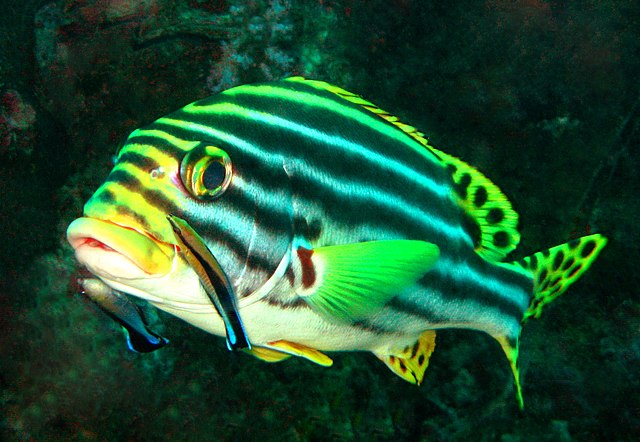Coloration evidence for natural selection
Animal coloration provided important early evidence for evolution by natural selection, at a time when little direct evidence was available. Three major functions of coloration were discovered in the second half of the 19th century, and subsequently used as evidence of selection: camouflage ; mimicry, both Batesian and Müllerian; and aposematism.
Natural selection has driven the ptarmigan to change from snow camouflage in winter to disruptive coloration suiting moorland in summer.
Selective breeding transformed teosinte's small spikes (left) into modern maize (right). Darwin argued that evolution worked in a similar way.
Convergent evolution of snow camouflage in Arctic hare, ermine, and ptarmigan provided early evidence for natural selection.
Hugh Cott's drawings of 'coincident disruptive coloration' formed "persuasive arguments" for natural selection. Left: active; right: at rest, marks coinciding.
Animal colouration is the general appearance of an animal resulting from the reflection or emission of light from its surfaces. Some animals are brightly coloured, while others are hard to see. In some species, such as the peafowl, the male has strong patterns, conspicuous colours and is iridescent, while the female is far less visible.
A brilliantly-coloured oriental sweetlips fish (Plectorhinchus vittatus) waits while two boldly-patterned cleaner wrasse (Labroides dimidiatus) pick parasites from its skin. The spotted tail and fin pattern of the sweetlips signals sexual maturity; the behaviour and pattern of the cleaner fish signal their availability for cleaning service, rather than as prey
Bright coloration of orange elephant ear sponge, Agelas clathrodes signals its bitter taste to predators
Warning coloration of the skunk in Edward Bagnall Poulton's The Colours of Animals, 1890
In Roseate Spoonbills 1905–1909, Abbott Handerson Thayer tried to show that even the bright pink of these conspicuous birds had a cryptic function.








